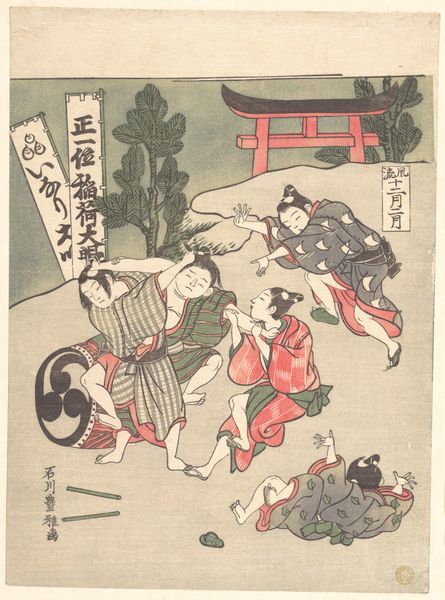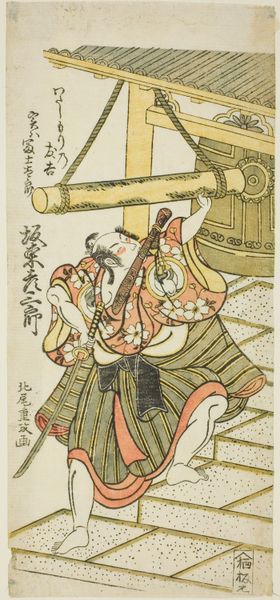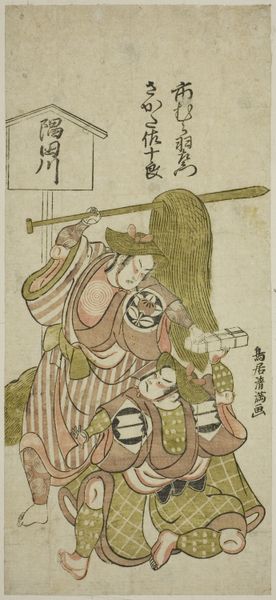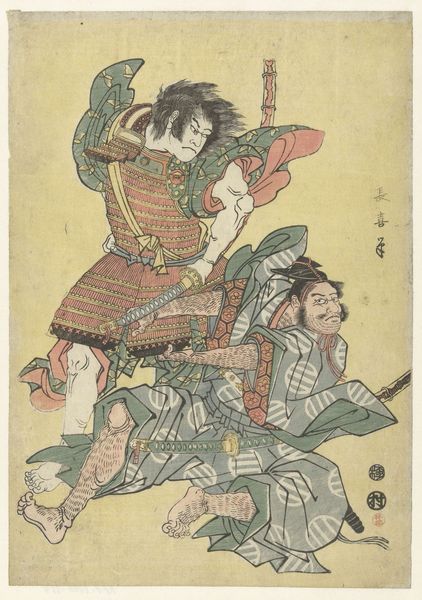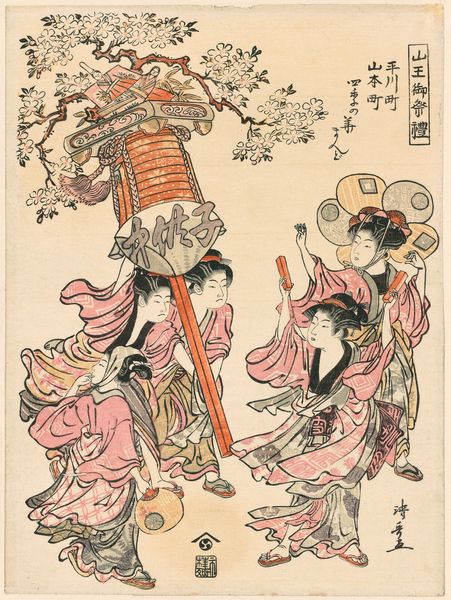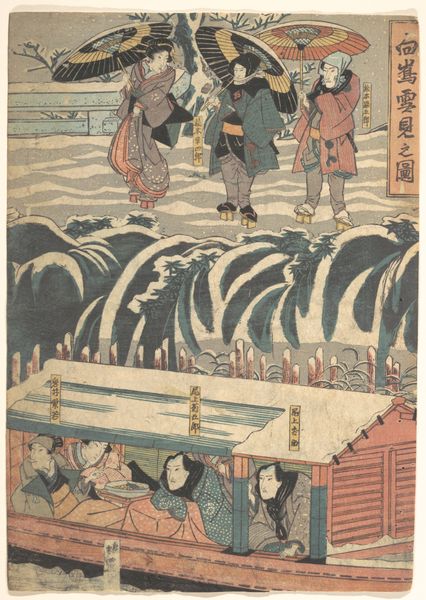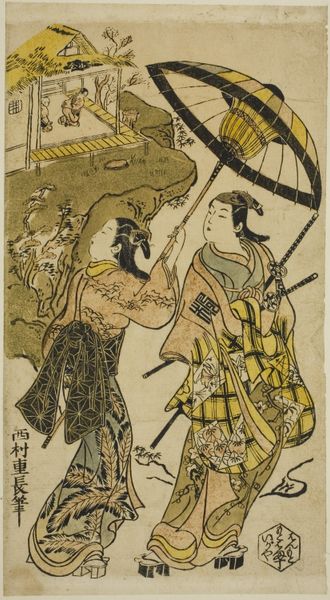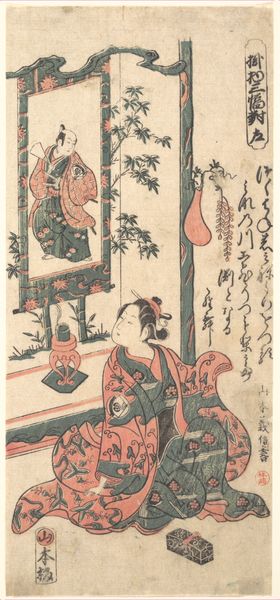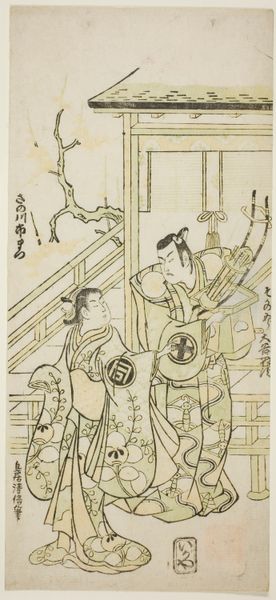
Ichikawa Danjuro IV in the Role of Okazaki Akushiro 1745 - 1765
0:00
0:00
print, woodblock-print
#
portrait
# print
#
asian-art
#
ukiyo-e
#
japan
#
figuration
#
woodblock-print
#
men
#
genre-painting
Dimensions: 12 7/32 x 5 5/8 in. (31.1 x 14.3 cm)
Copyright: Public Domain
Editor: Here we have "Ichikawa Danjuro IV in the Role of Okazaki Akushiro," a woodblock print by Torii Kiyomitsu, made sometime between 1745 and 1765. The figure’s expression is intense, and he's wielding what looks like a huge beam of wood. What’s striking is how the artist uses such vibrant colors for a portrait like this, which creates an arresting visual tension. What's your take on it? Curator: That arresting tension, as you call it, points to the core of Ukiyo-e's societal function. These prints weren't just images; they were cultural currency, particularly this one portraying a celebrated Kabuki actor. The vibrant colors and dynamic pose elevated him, creating a desirable, marketable image. We must consider how this image intersects with the actor’s social position, the desires of the audience, and the burgeoning celebrity culture of Edo-period Japan. Editor: So, it's less about capturing a likeness and more about constructing an ideal? Curator: Precisely. Consider the historical context. Kabuki was incredibly popular, but also often viewed with suspicion by the ruling classes. These prints offered a way for audiences to connect with, and almost possess, these figures. This connects to contemporary discussions around image ownership and the commodification of identity. What do you make of the way the actor's masculinity is presented here? Editor: It's interesting to see the blend of power and theatricality. The wood beam, his determined expression... yet it's all staged, performative. Almost as if there is social commentary imbedded into the image of performing maleness. Curator: Exactly. It makes you think about performance, not just on stage, but in daily life and gender roles in Japanese society and how people were expected to conform. Editor: This has been such a powerful way to learn. I'll never look at Ukiyo-e prints the same way. Thanks for shifting my perception. Curator: It’s essential to keep questioning the narratives these artworks present. They can reflect, reinforce, or subvert existing social structures. It’s only through intersectional dialogues that we see the complexities within them.
Comments
No comments
Be the first to comment and join the conversation on the ultimate creative platform.

